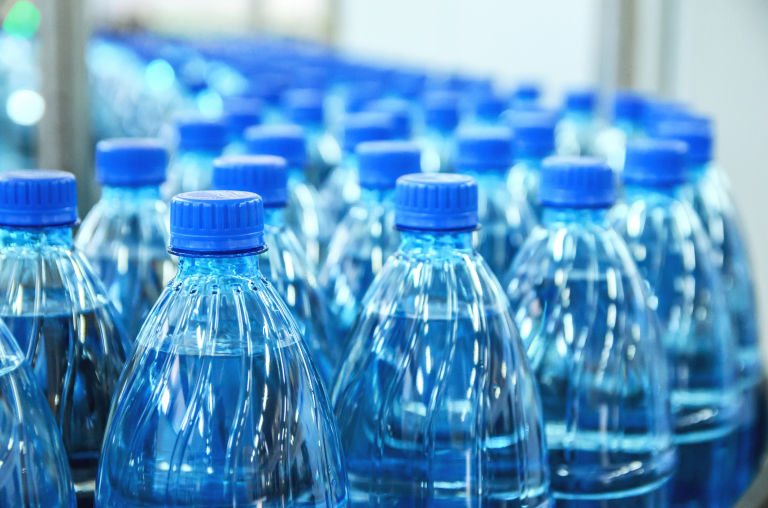Although you may prefer wine, water makes up roughly 60 percent of your body, where it seriously pulls its weight: it helps transport nutrients to your cells, moves waste out of your body, and plays an important role in respiration and energy metabolism, according to the National Academy of Sciences’s Institute of Medicine.
The thing is, you lose liquid when you breathe, go to the bathroom, and sweat – bad news if you don’t replace it. ‘Dehydration is damaging to our tissues and decreases our blood volume, which can reduce blood flow to vital organs,’ says Dr Irwin Rosenberg, M.D., Senior Scientist at Tufts University’s Neuroscience and Aging Laboratory. It’s why even mild dehydration can trigger headaches, darken urine, and cause mouth dryness, says Melissa Majumdar, a registered dietitian at the Center for Metabolic and Bariatric Surgery with Brigham Health and spokesperson for the Academy of Nutrition and Dietetics.
Drink too little – or too much – and you can throw off your body’s concentration of electrolytes, a mix of minerals such as sodium that enable nerves to send messages throughout the body for proper functioning, according to MedlinePlus. Good news: it’s not hard to get your hydration levels just right:
How to Calculate Your Daily Fluid Needs
Most adult women need 11 cups of fluid per day, while most men require about 15 cups – but it largely depends on your body weight and activity levels, says Majumdar.
If you want to get technical, she says you can estimate how many fluid ounces to drink each day by multiplying your body weight in pounds by .5 or, if you plan to exercise or spend time in extreme heat or cold, use .66. Remember: there are 8 fluid ounces in one cup.
When to Step Up Your Hydration Game
Climate and altitude can affect how much fluid you need, according to the Institute of Medicine: in the heat, your body loses more water and electrolytes through sweating, which evaporates to keep you cool. And in cold temperatures or at high altitudes, you lose extra water every time you exhale. To prevent dehydration in these scenarios, Majumdar recommends keeping a water bottle on hand at all times, and refill it regularly. ‘The best way to hydrate is to sip small amounts consistently throughout the day so your body can absorb the water more efficiently,’ she says.
Sickness can also affect your body’s fluid balance: Your body expels a lot of water when you vomit or have diarrhoea, according to the Centers for Disease Control. To recover, they recommend sipping on broth or a sports drink, which, unlike water, contains restorative electrolytes.

How to Tell Whether You’re Drinking Enough
You don’t need to count cups – just listen to your body: ‘Our systems are built to tell us when we’re thirsty,’ Dr. Rosenberg says. The first sign you’re behind on fluid intake is a decrease in saliva, which kicks in when you’re two cups short of being hydrated and leads to dryness in the mouth, according to Majumdar. Drinking that much fluid can bring you back to baseline, she says.
To check whether you’re sipping enough throughout the day, glance in the toilet after you pee, suggests Dr. Rosenberg. ‘If it’s light yellow it means you’re hydrated and your system is working well,’ he says You don’t need to count cups but look out for dark urine, which means your body is so short on water that it’s holding on to what it’s got.
Which Liquids Count?
If you can’t stand the taste of plain old water, which is ideal since it contains no added sugars, according to Majumdar, milk, plus sugar-free options like fruit-infused or carbonated water can count toward your hydration goals.
Despite myths you might have heard, caffeinated drinks are just like other fluids: they only increase your urge to pee without causing your body to release extra fluids, Majumdar says – meaning coffee and tea work as well as water.
While cow’s milk and unsweetened alternatives can also hydrate you, OD-ing on flavoured milk alternatives, regular soda, and fruit juice, which can be high in sugar, can increase your risk of developing type-2 diabetes, heart disease, kidney diseases, non-alcoholic liver disease, not to mention tooth decay and cavities, according to the Centers for Disease Control – so it’s best to sip them in moderation. The same goes for alcohol: although there’s evidence that beer can be as beneficial as sports drinks after exercise, alcohol generally inhibits the release of a hormone that helps you retain water, so you expel more liquid than you’ve consumed when you imbibe, according to research featured in the medical journal, Alcohol Health and Research World.
Yes, You Can Eat Your Water, Too
Water from food is absorbed by the gastrointestinal tract – just like the water you drink, according to the Institute of Medicine – one reason why the average person get about 20 percent of the fluid they consume from foods, according to Majumdar.
Fruits and veggies, like melon, strawberries, cabbage, celery, and spinach, are particularly hydrating thanks to their high water content – but even pasta and ice cream contain enough water to quench your thirst, according to the USDA National Nutrient Database for Standard Reference.
When to Worry About Over-Hydrating
While dehydration is way more common than ODing, drinking too much water can dilute the blood and trigger hyponatremia, or abnormally low sodium levels. This can cause nausea and vomiting, headaches, fatigue, muscle weakness, and cramping, and, in extreme cases, a seizure or coma, according to the Mayo Clinic. In a majority of cases, Majumdar says, this only affects endurance athletes such as marathoners who rehydrate with water (no electrolytes) – but the solve is pretty simple. ‘If you’re working out for more than an hour, drink a sports drink, which helps you retain water and keep your sodium levels up,’ she says. Otherwise, no worries – unless you really, really wish your water was wine.












